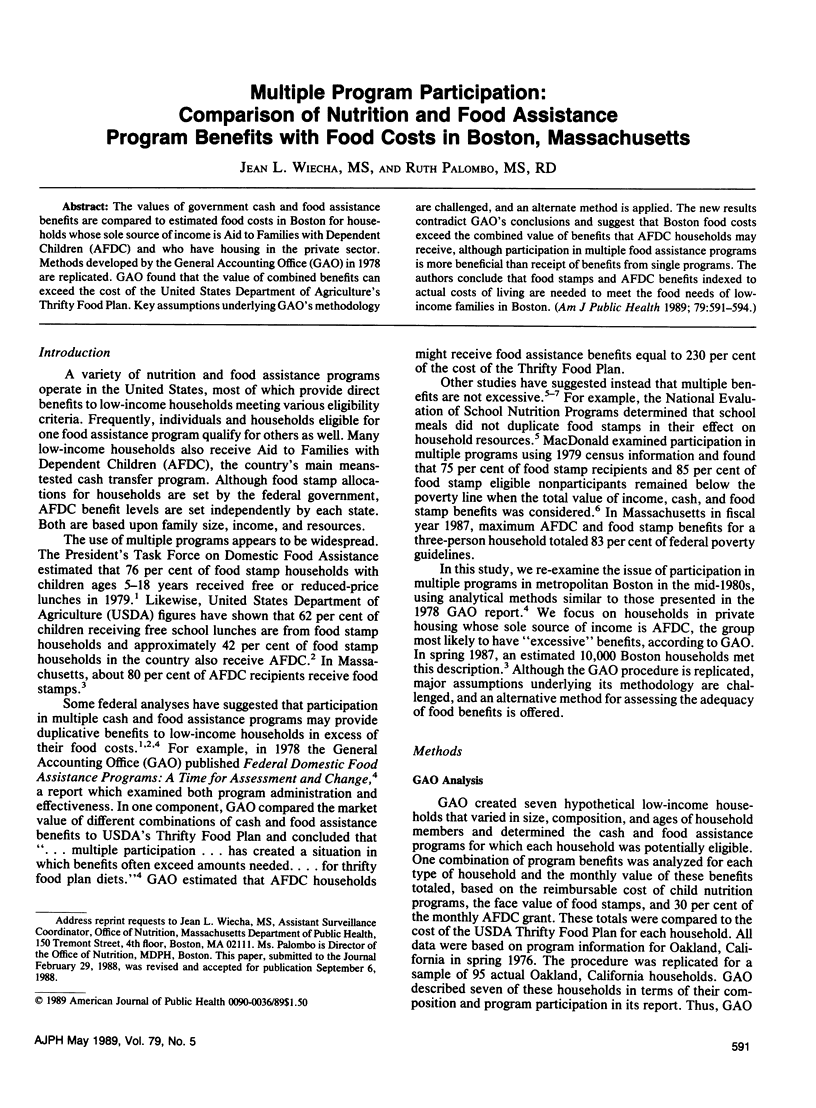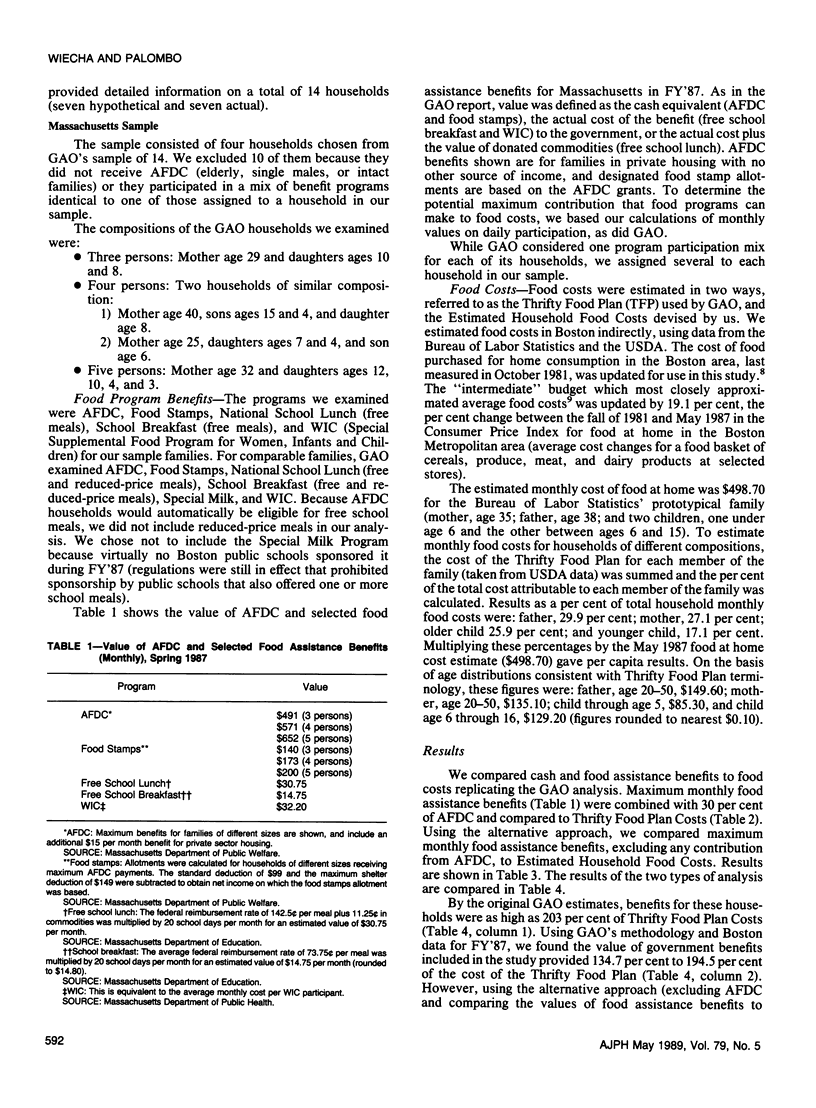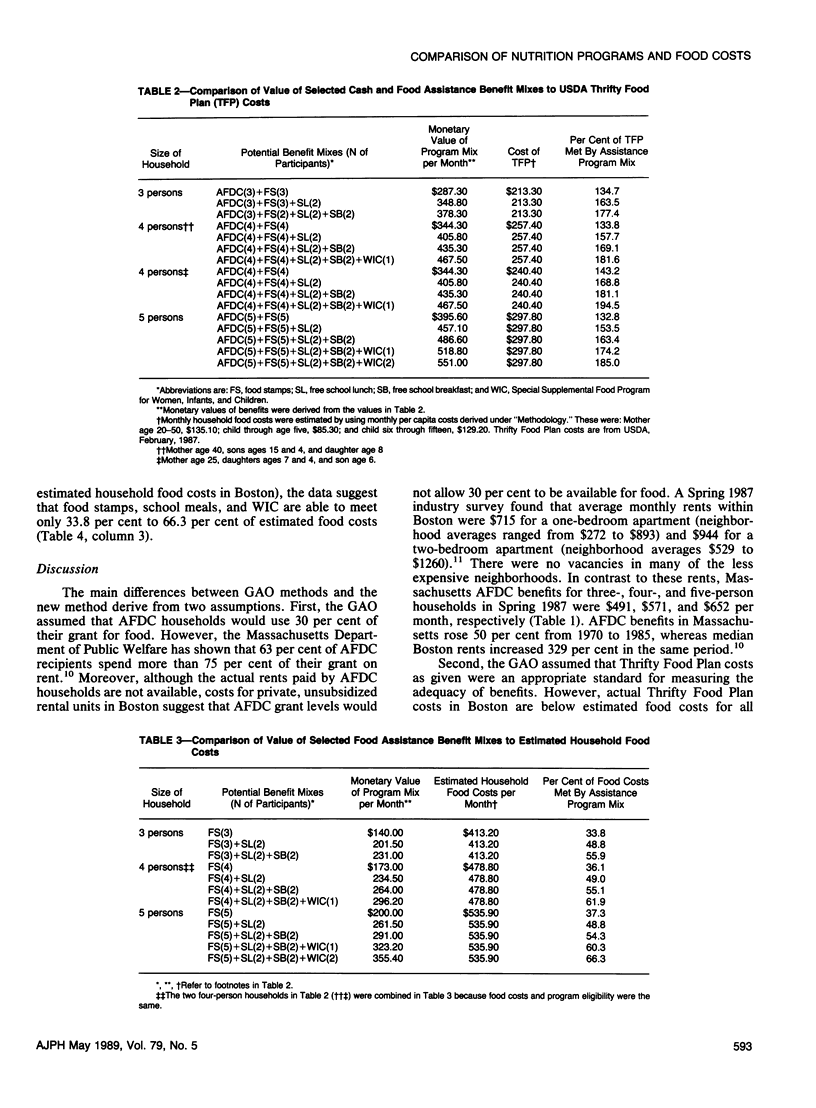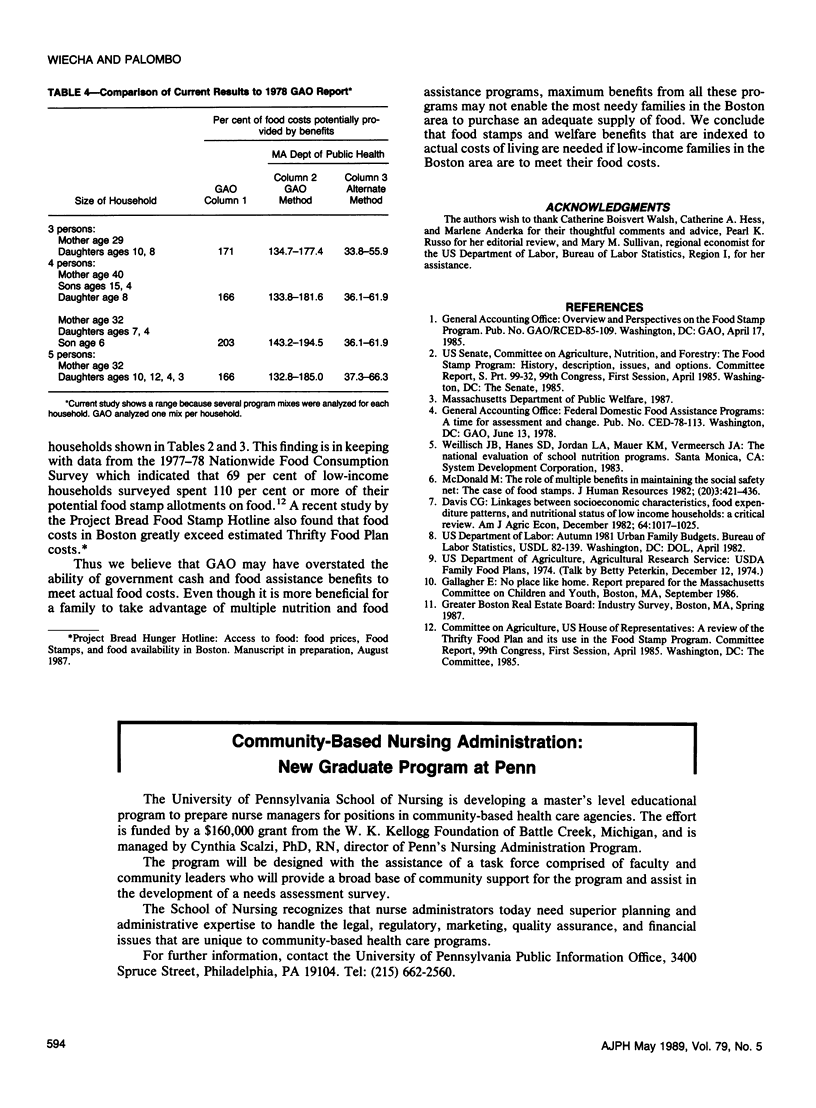Abstract
The values of government cash and food assistance benefits are compared to estimated food costs in Boston for households whose sole source of income is Aid to Families with Dependent Children (AFDC) and who have housing in the private sector. Methods developed by the General Accounting Office (GAO) in 1978 are replicated. GAO found that the value of combined benefits can exceed the cost of the United States Department of Agriculture's Thrifty Food Plan. Key assumptions underlying GAO's methodology are challenged, and an alternate method is applied. The new results contradict GAO's conclusions and suggest that Boston food costs exceed the combined value of benefits that AFDC households may receive, although participation in multiple food assistance programs is more beneficial than receipt of benefits from single programs. The authors conclude that food stamps and AFDC benefits indexed to actual costs of living are needed to meet the food needs of low-income families in Boston.
Full text
PDF





